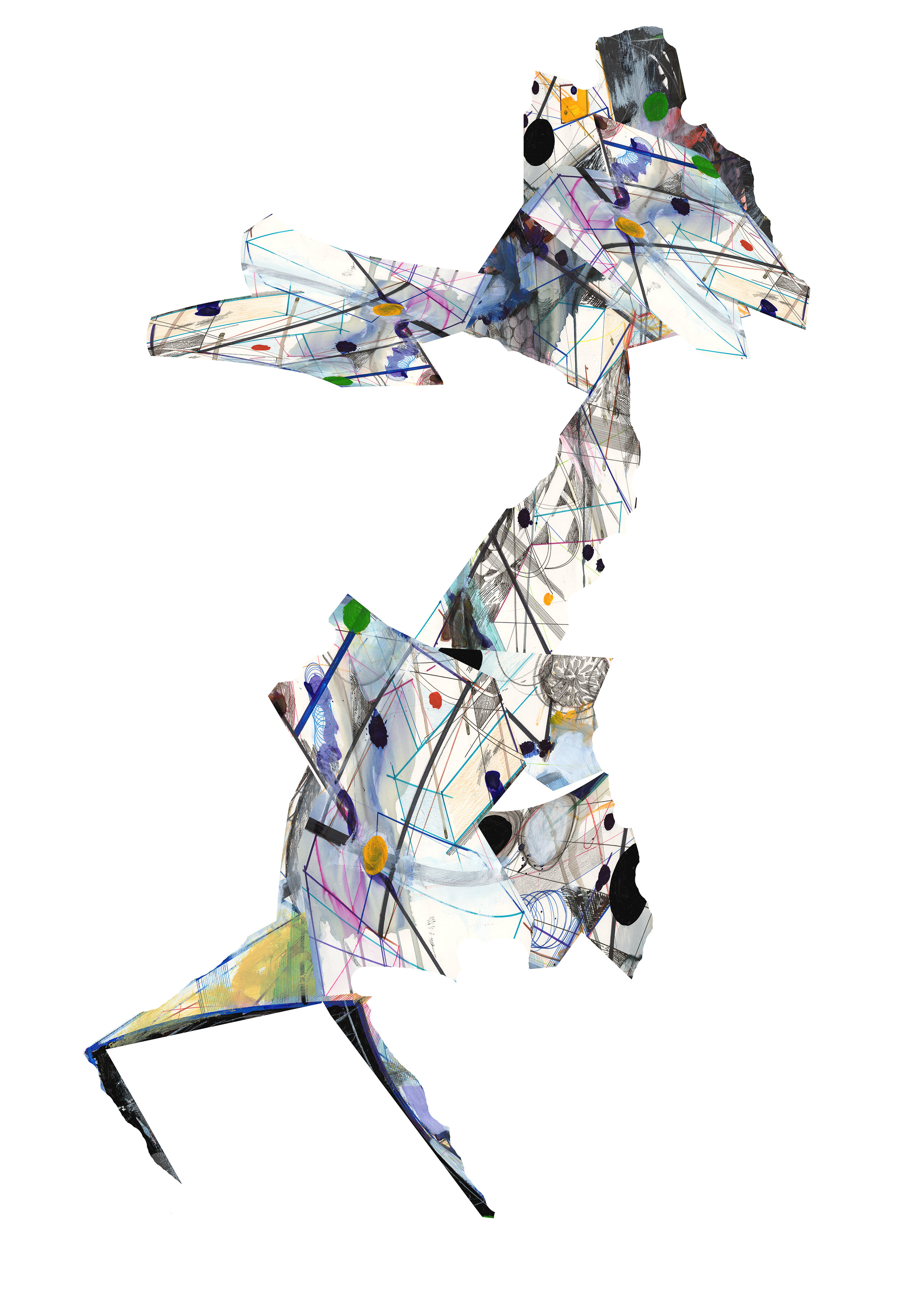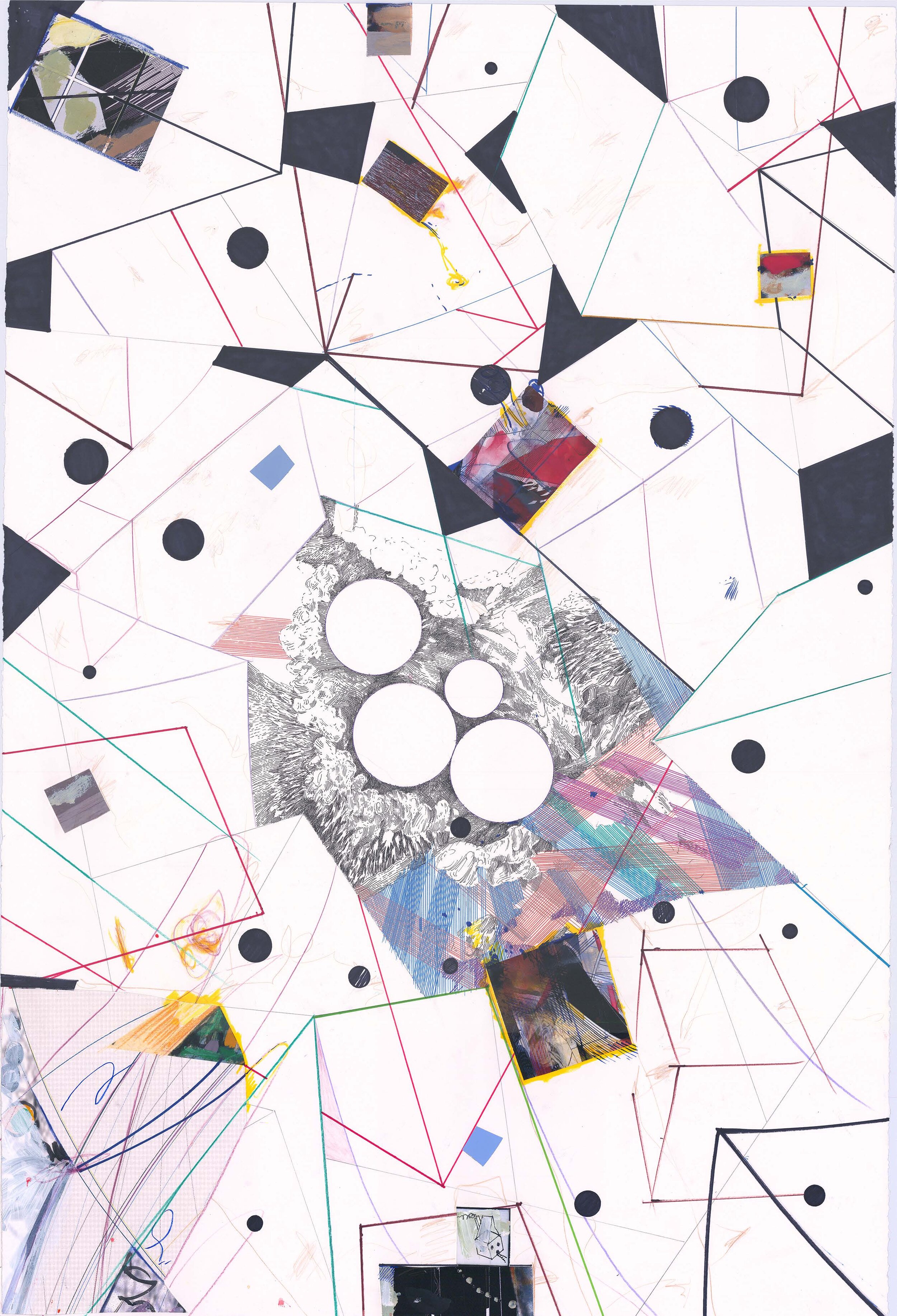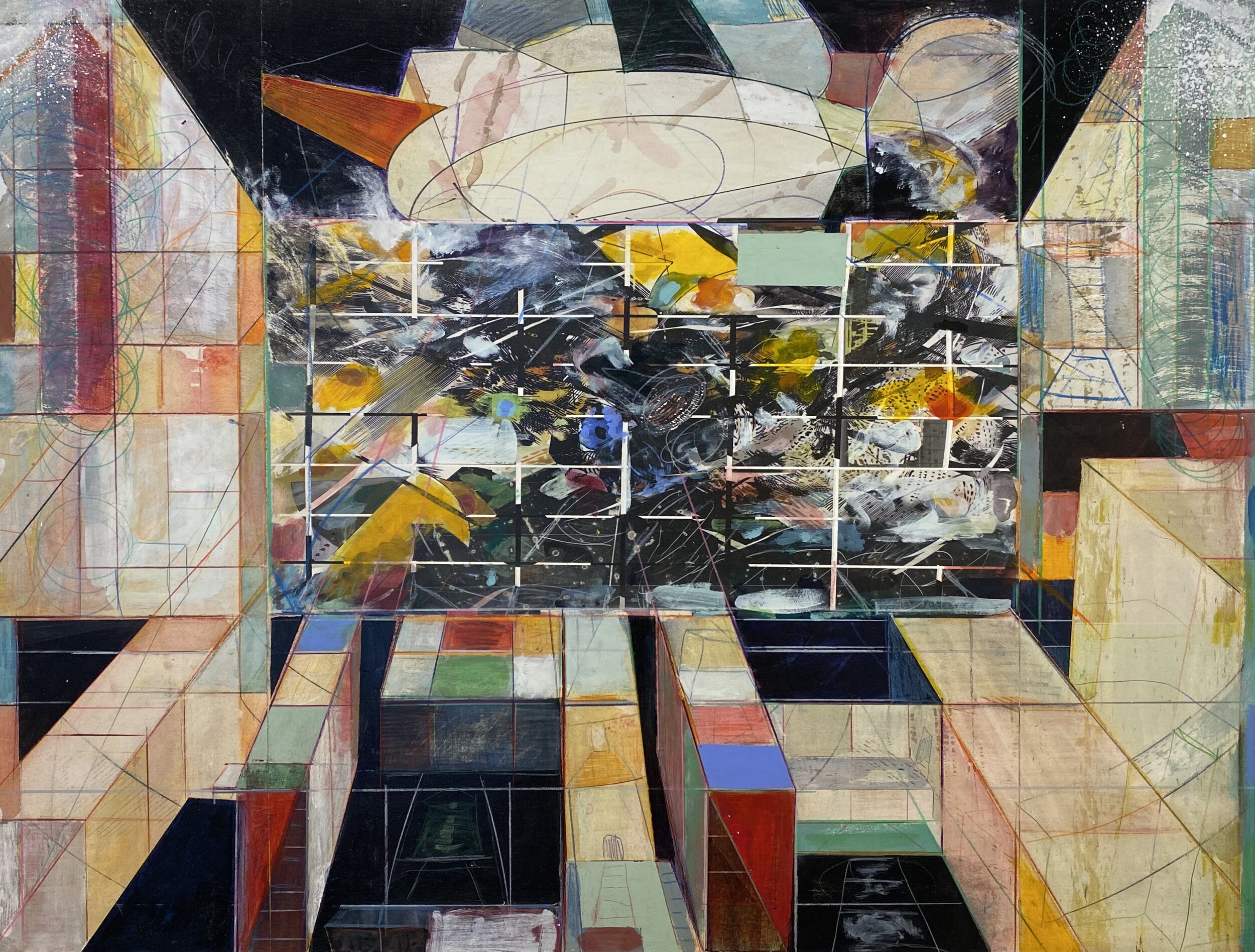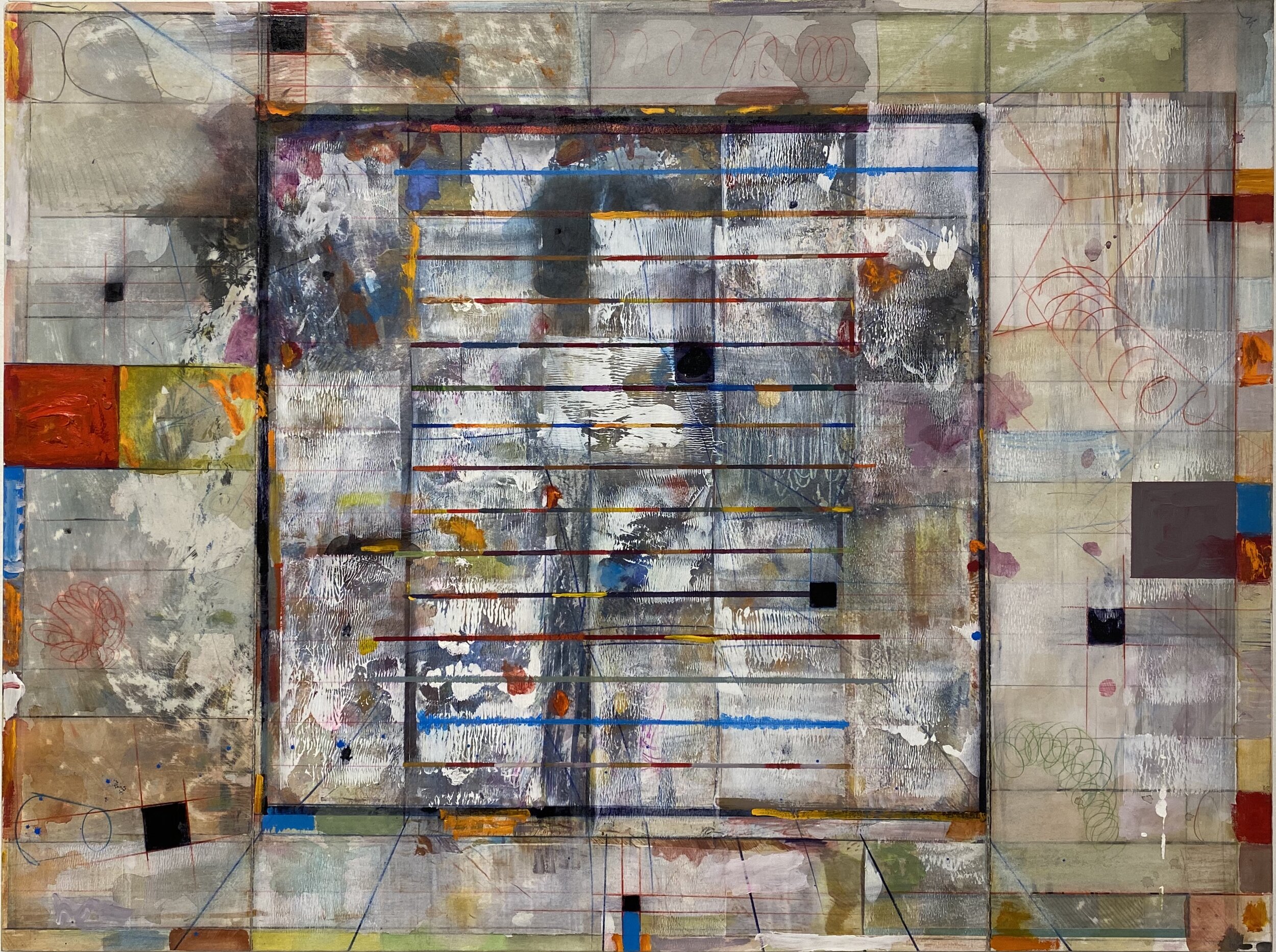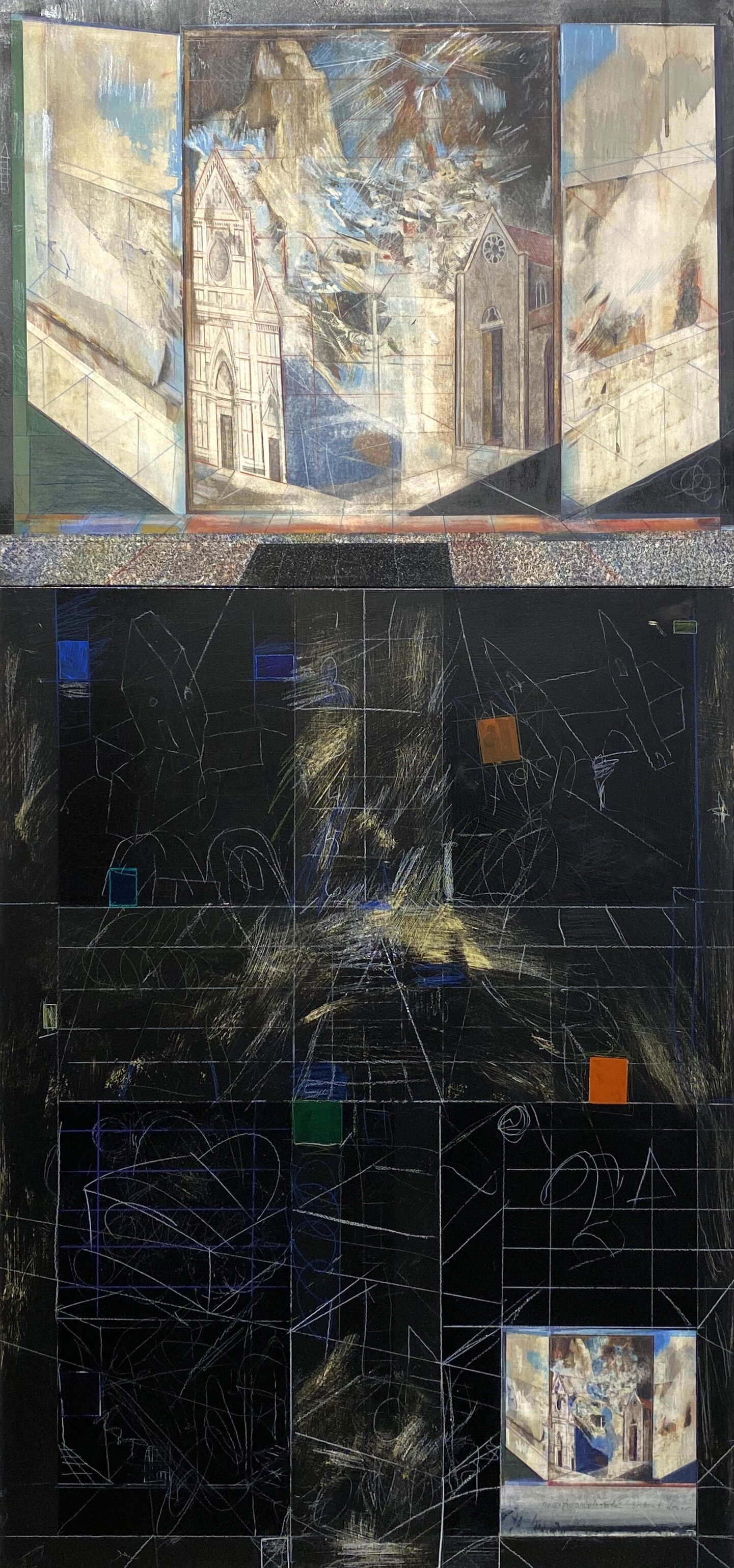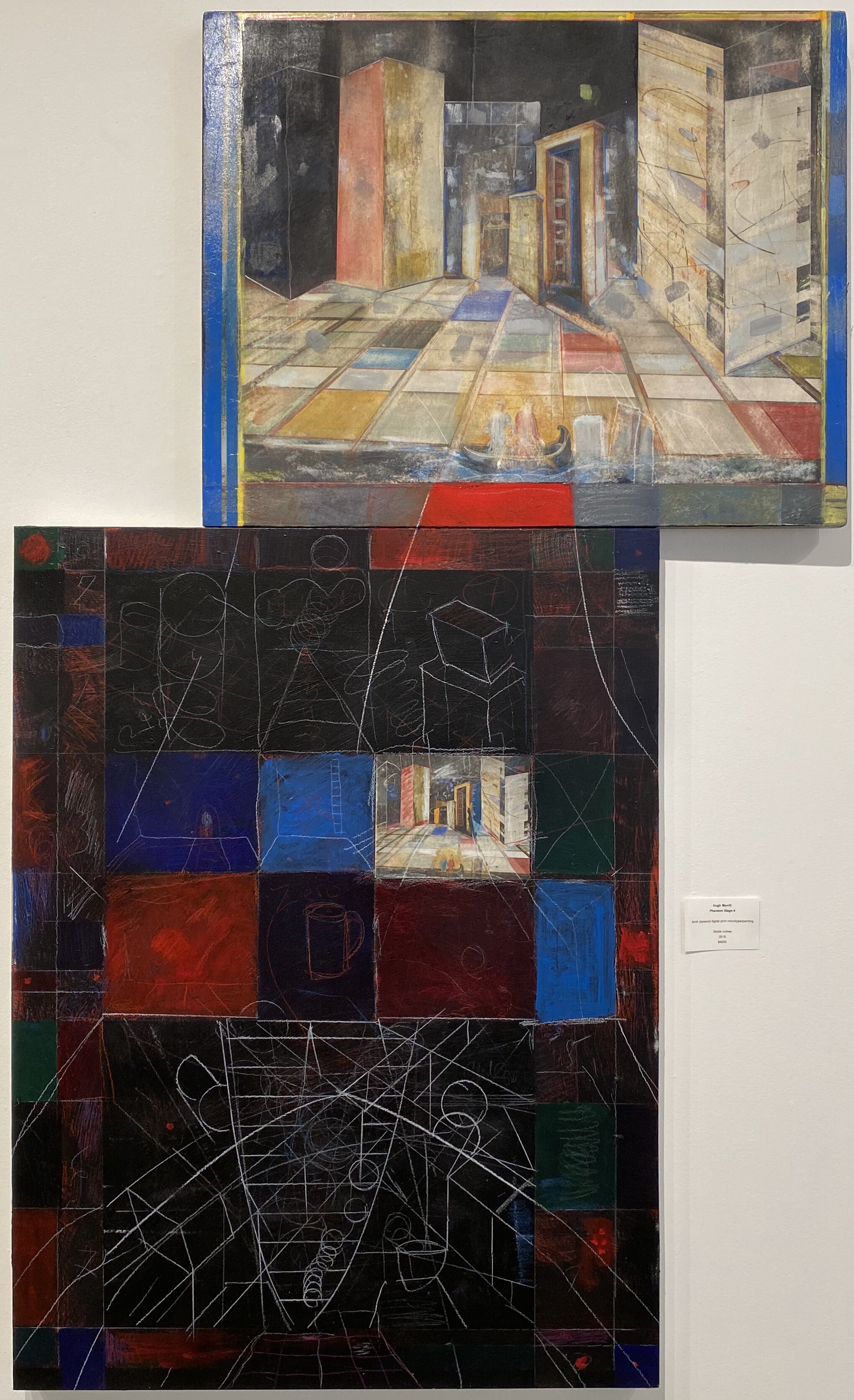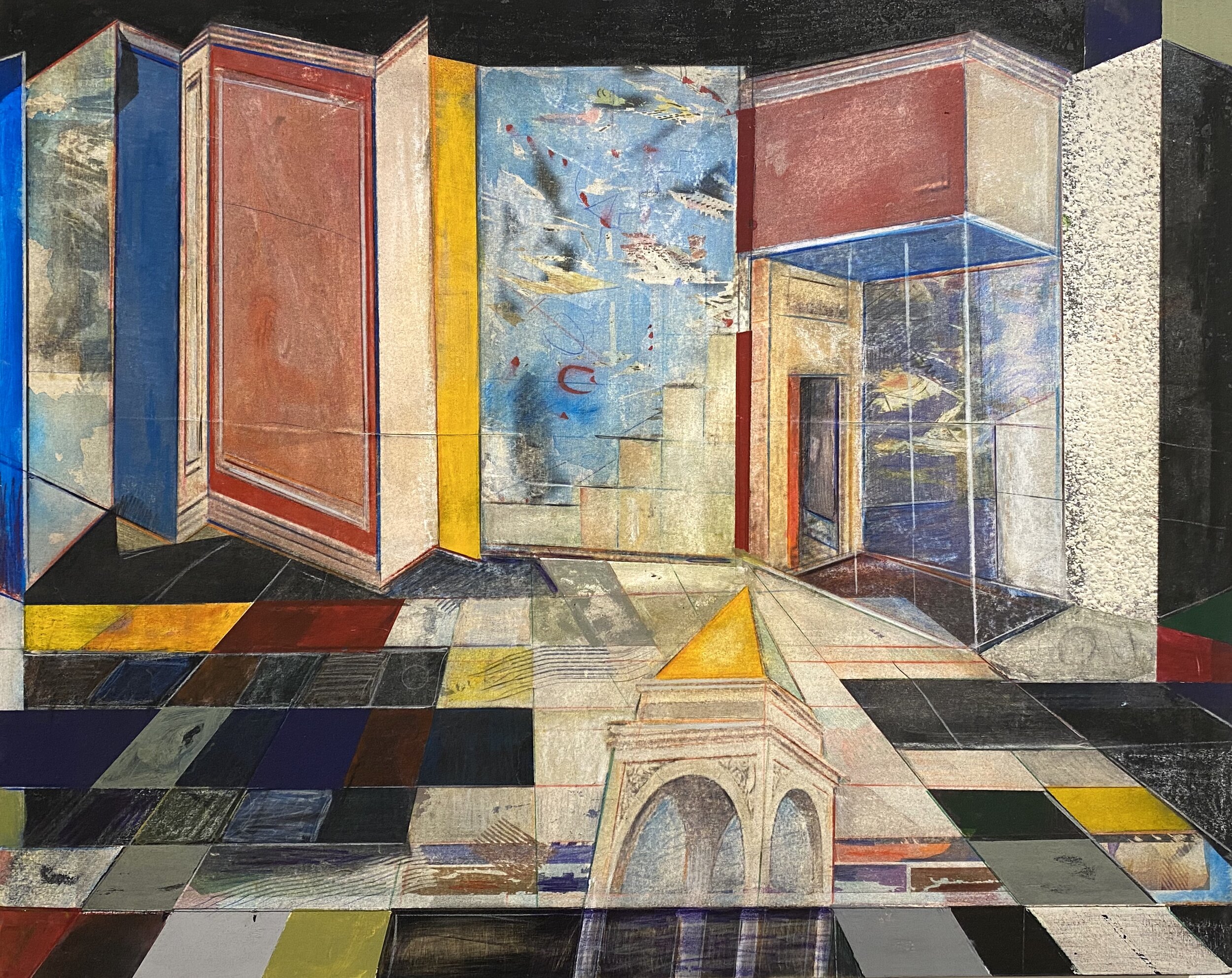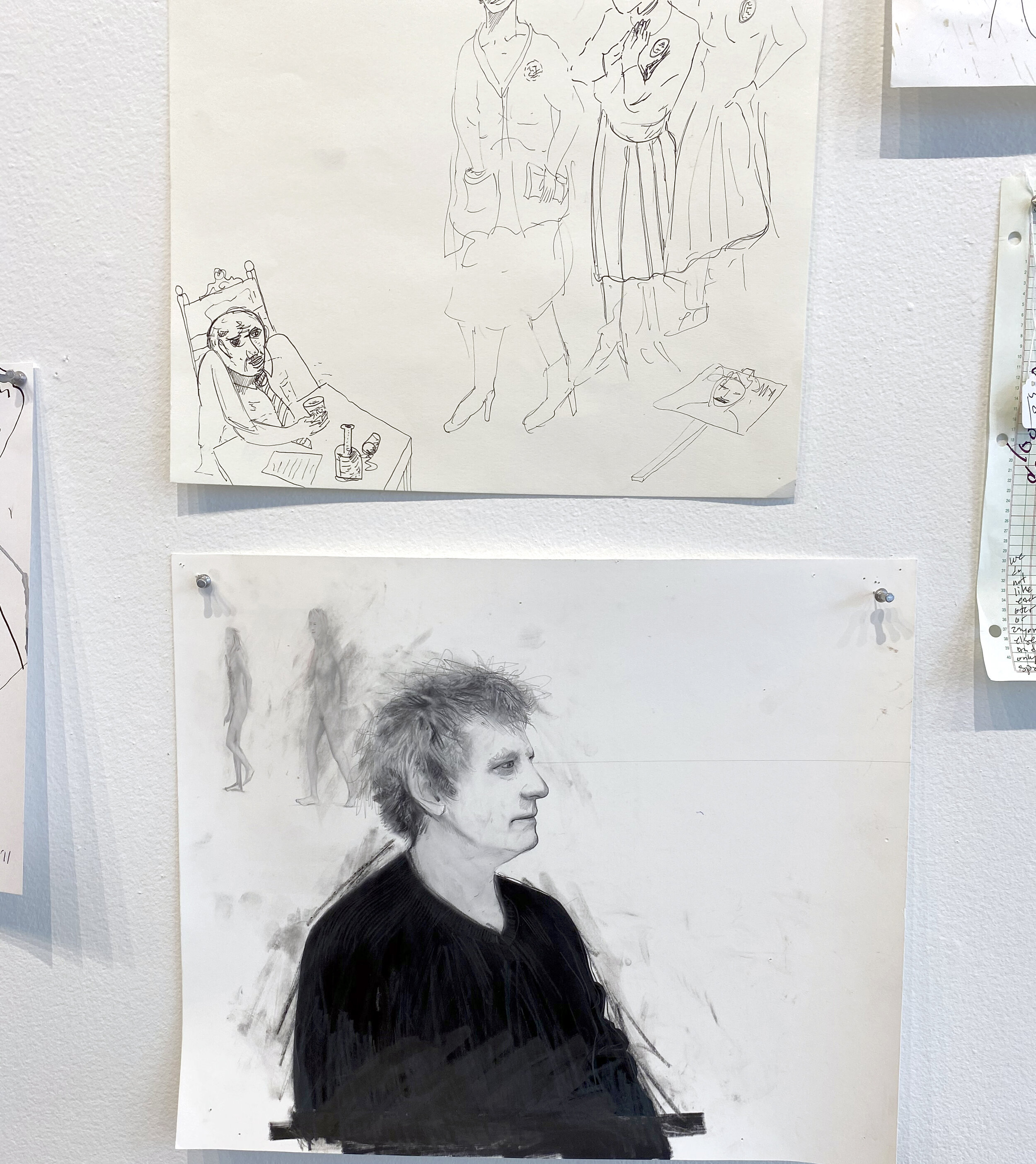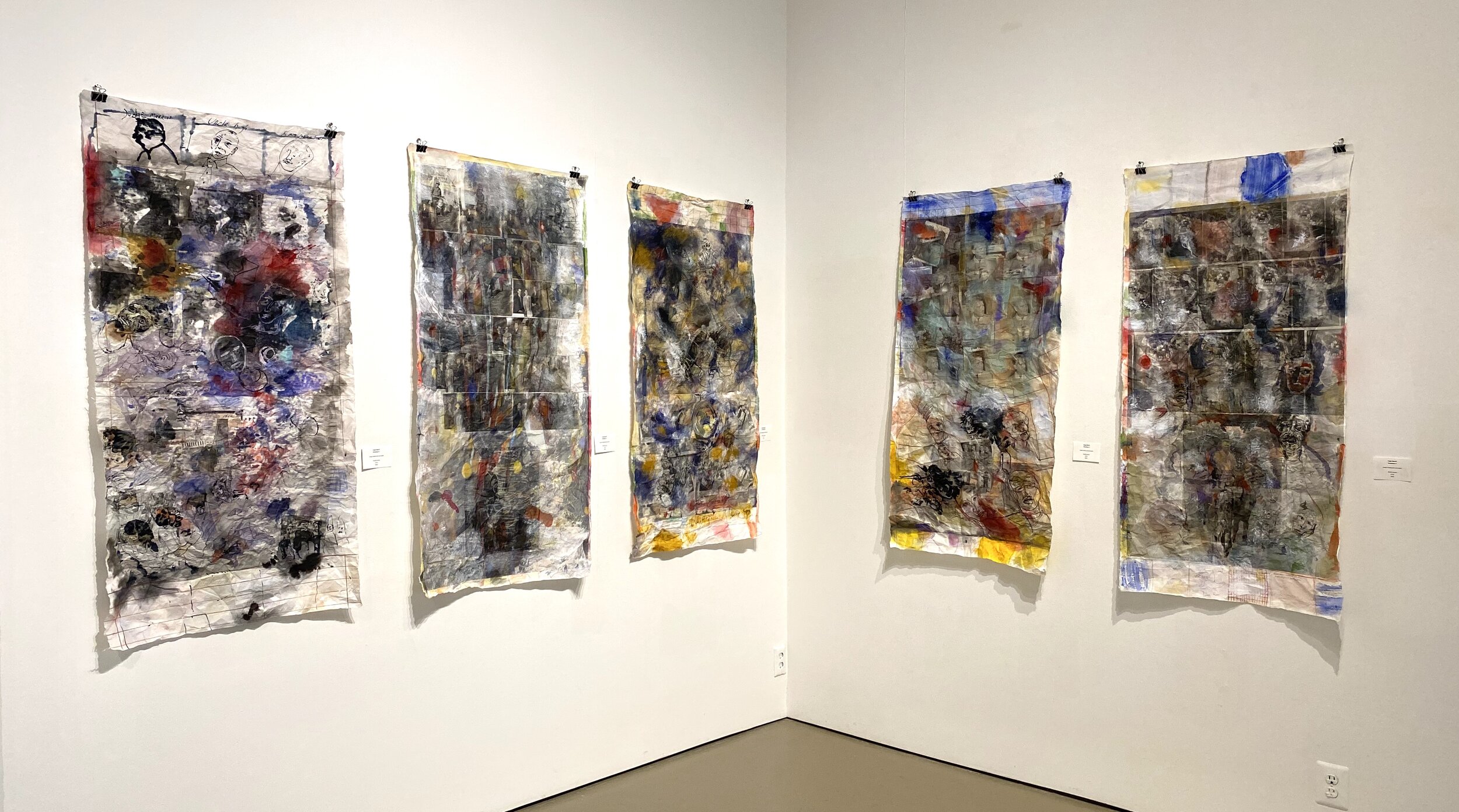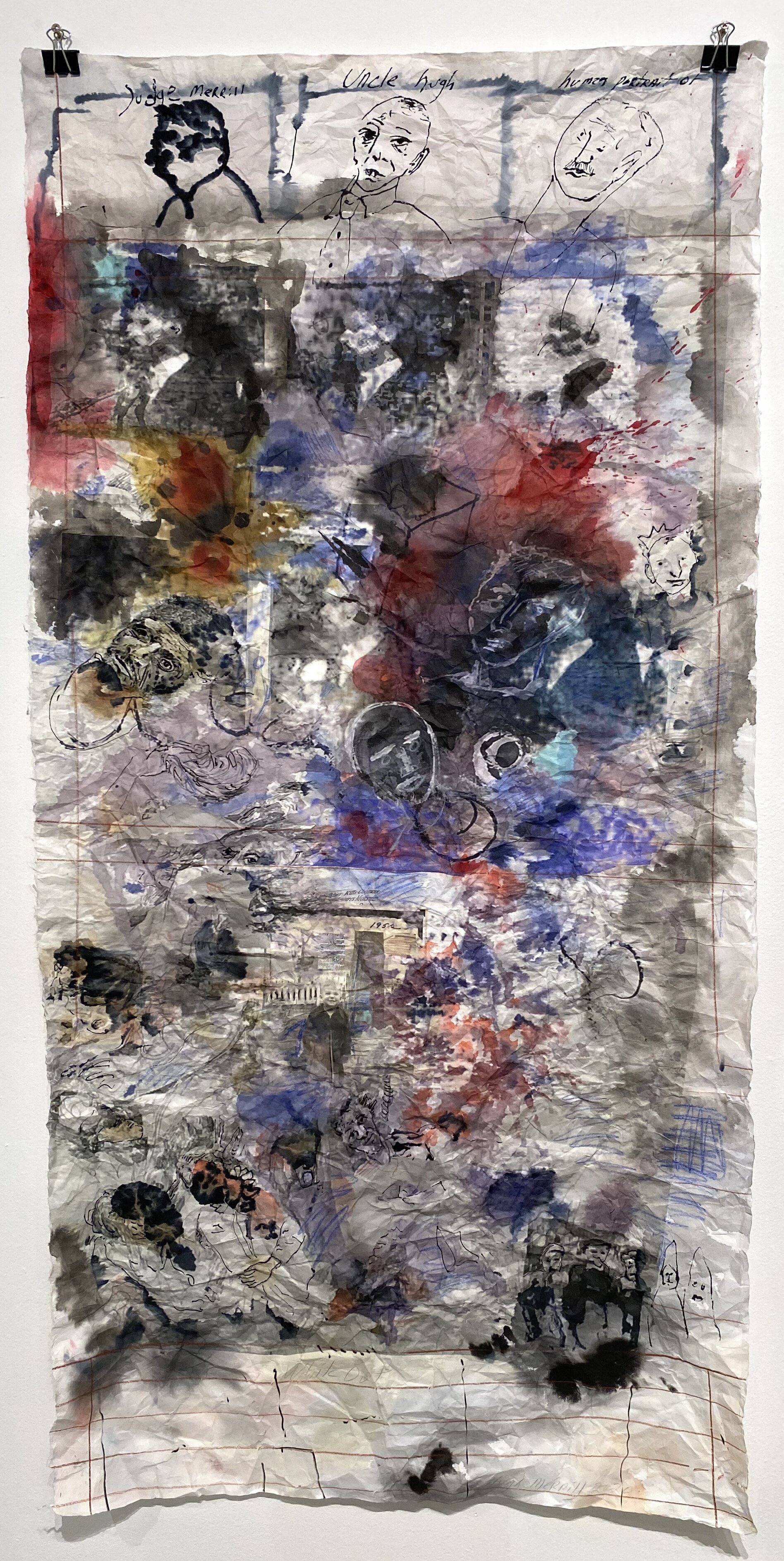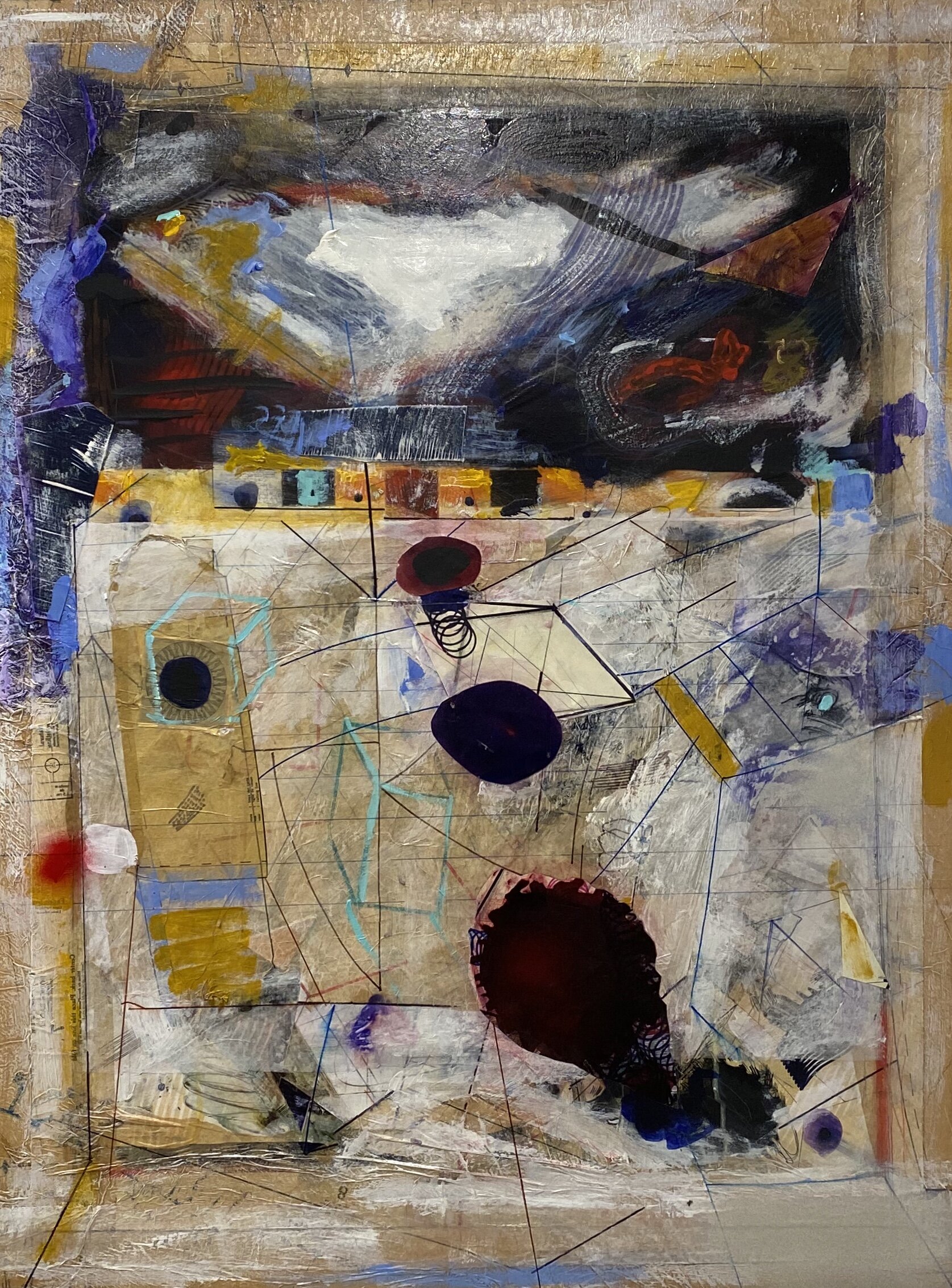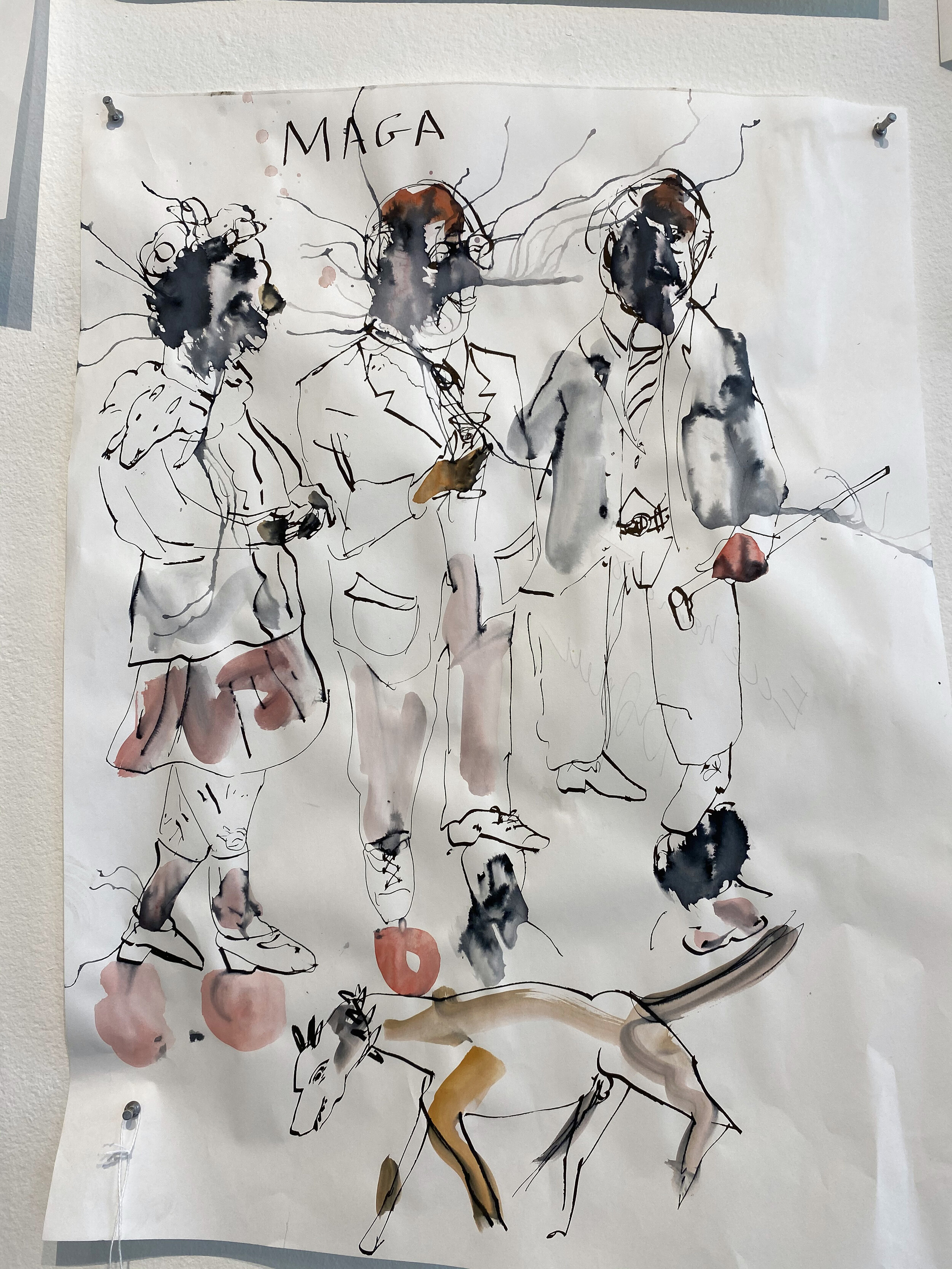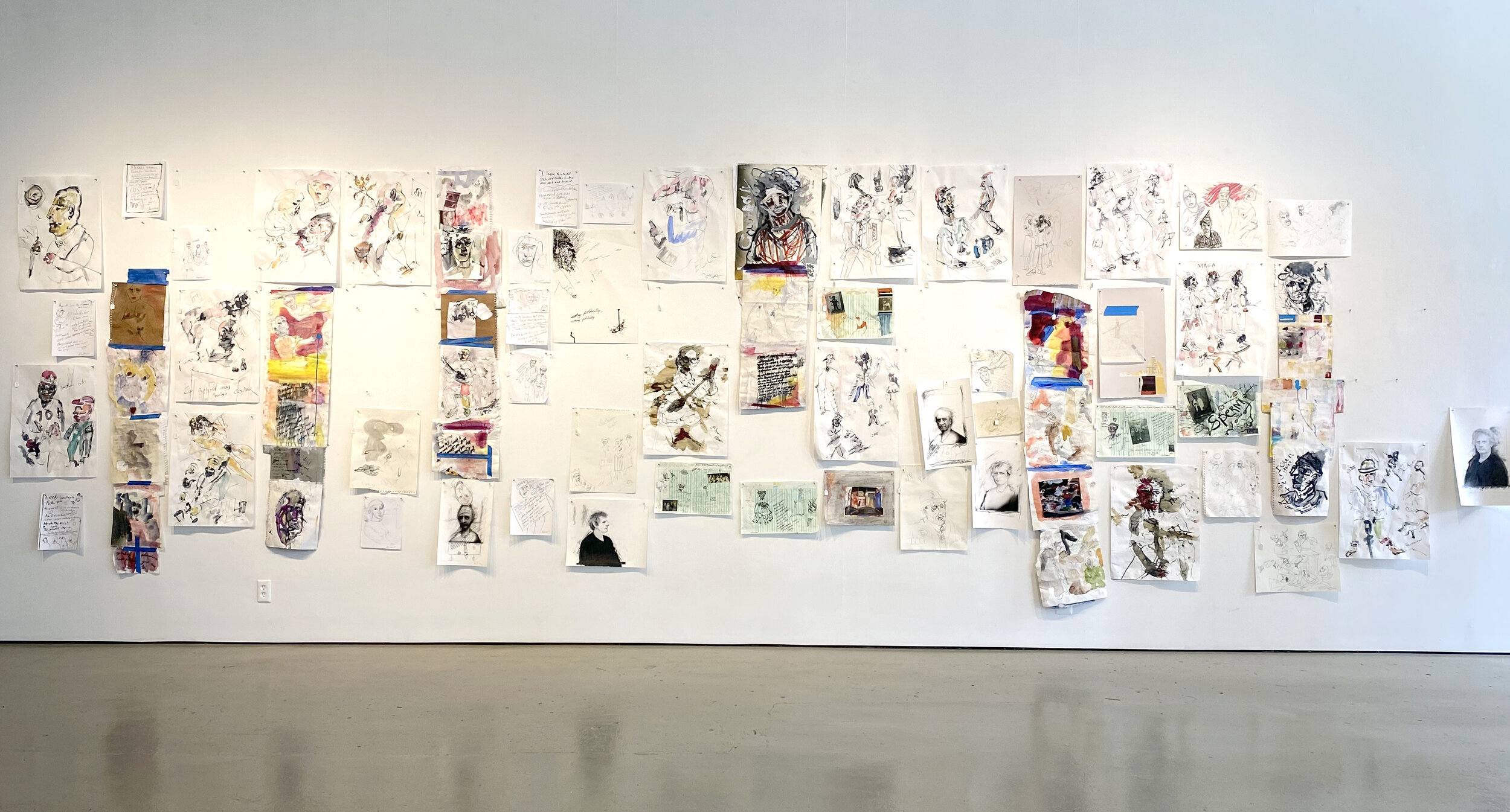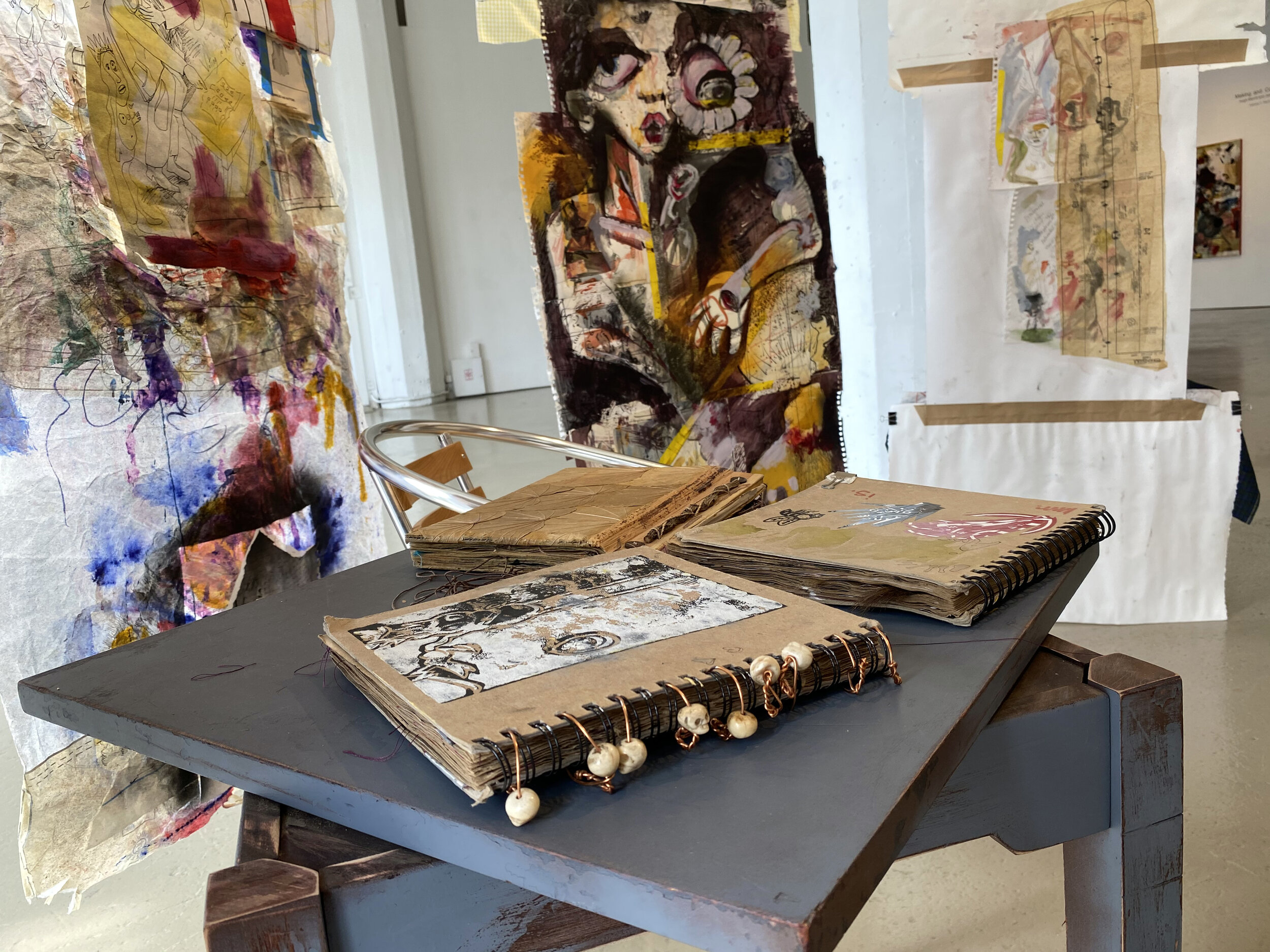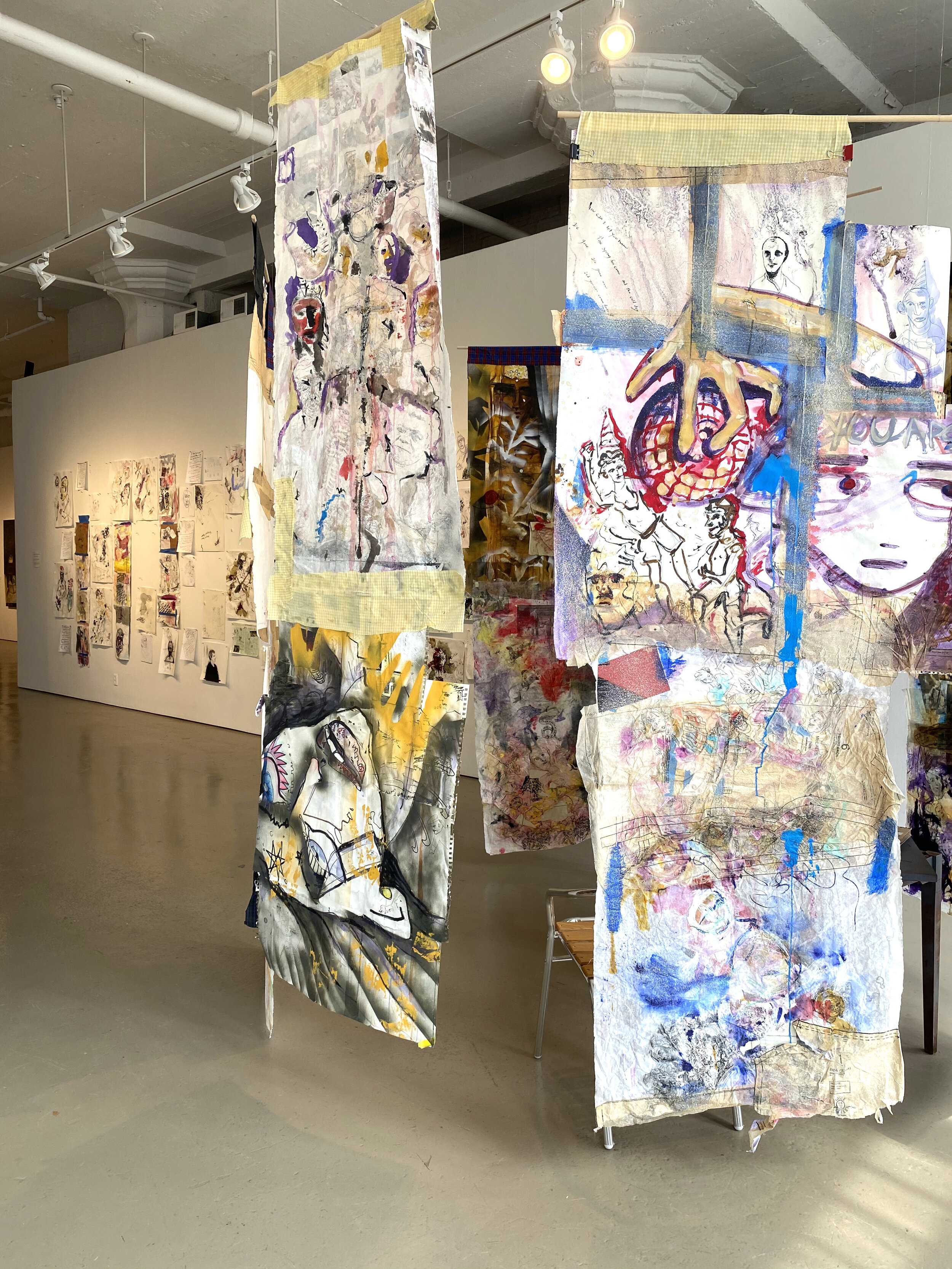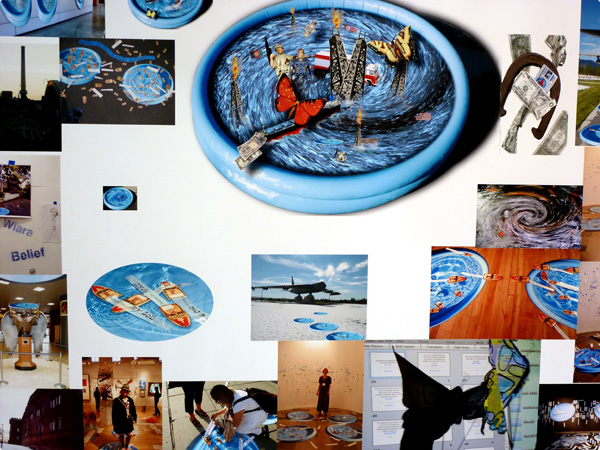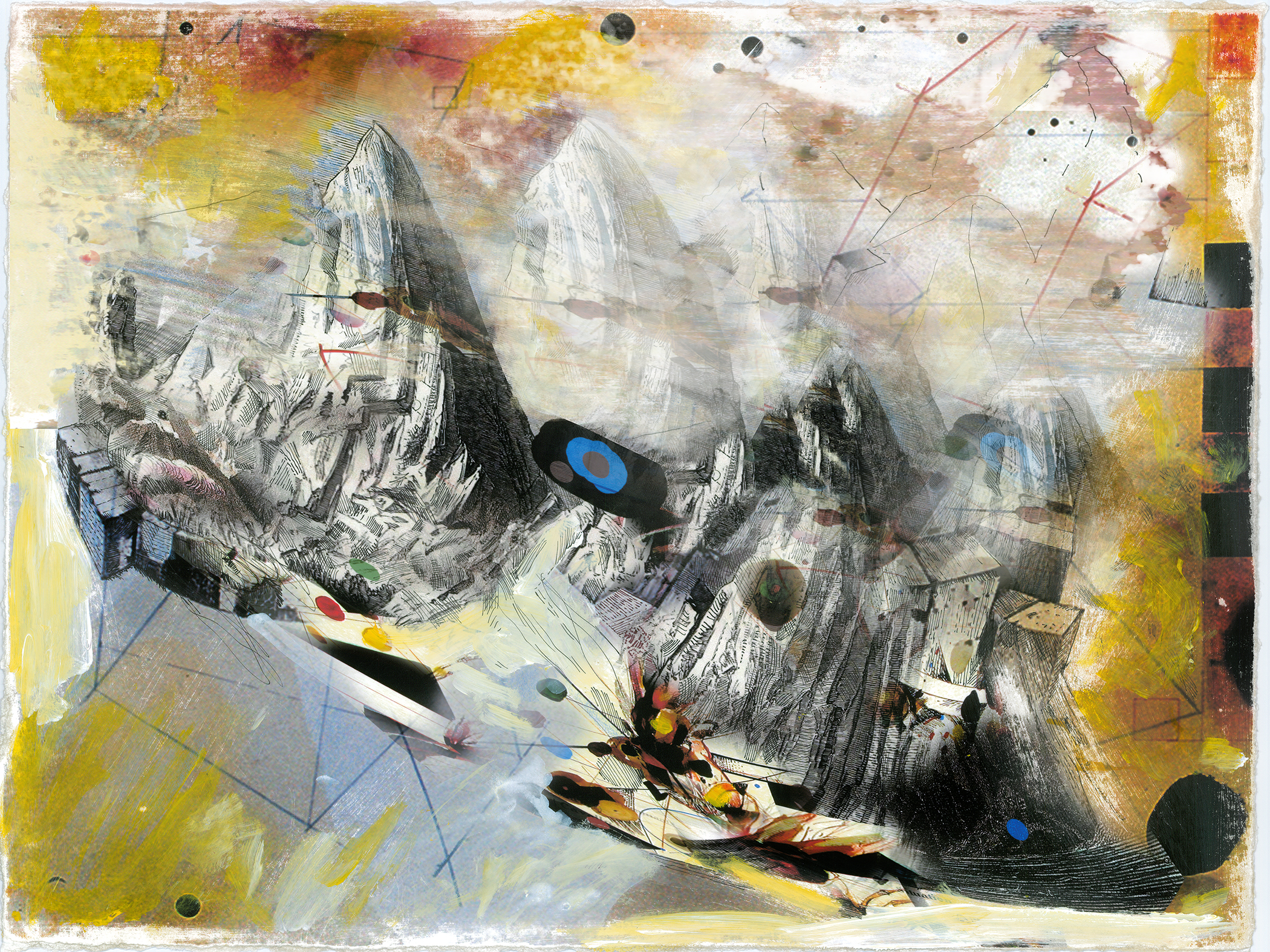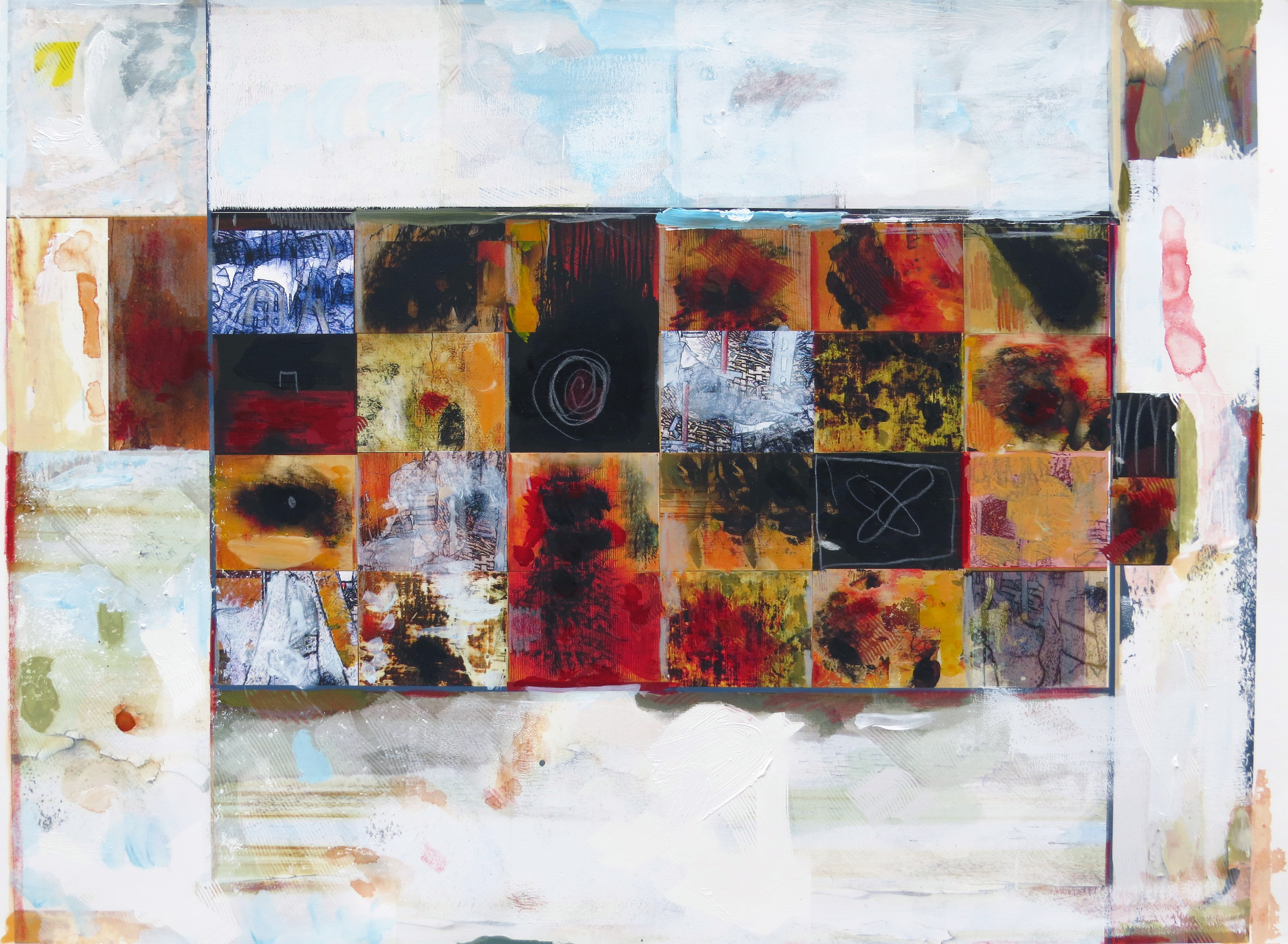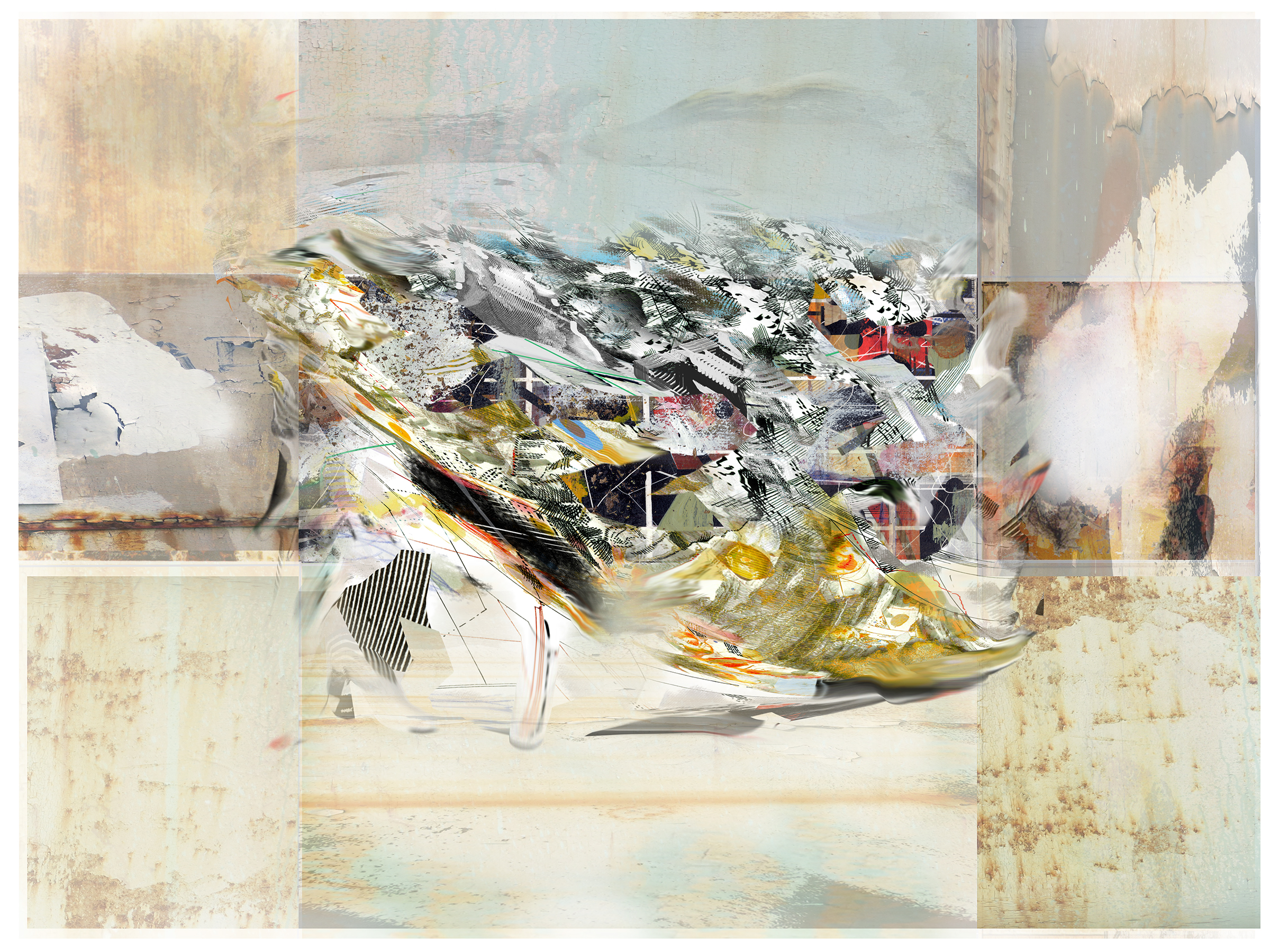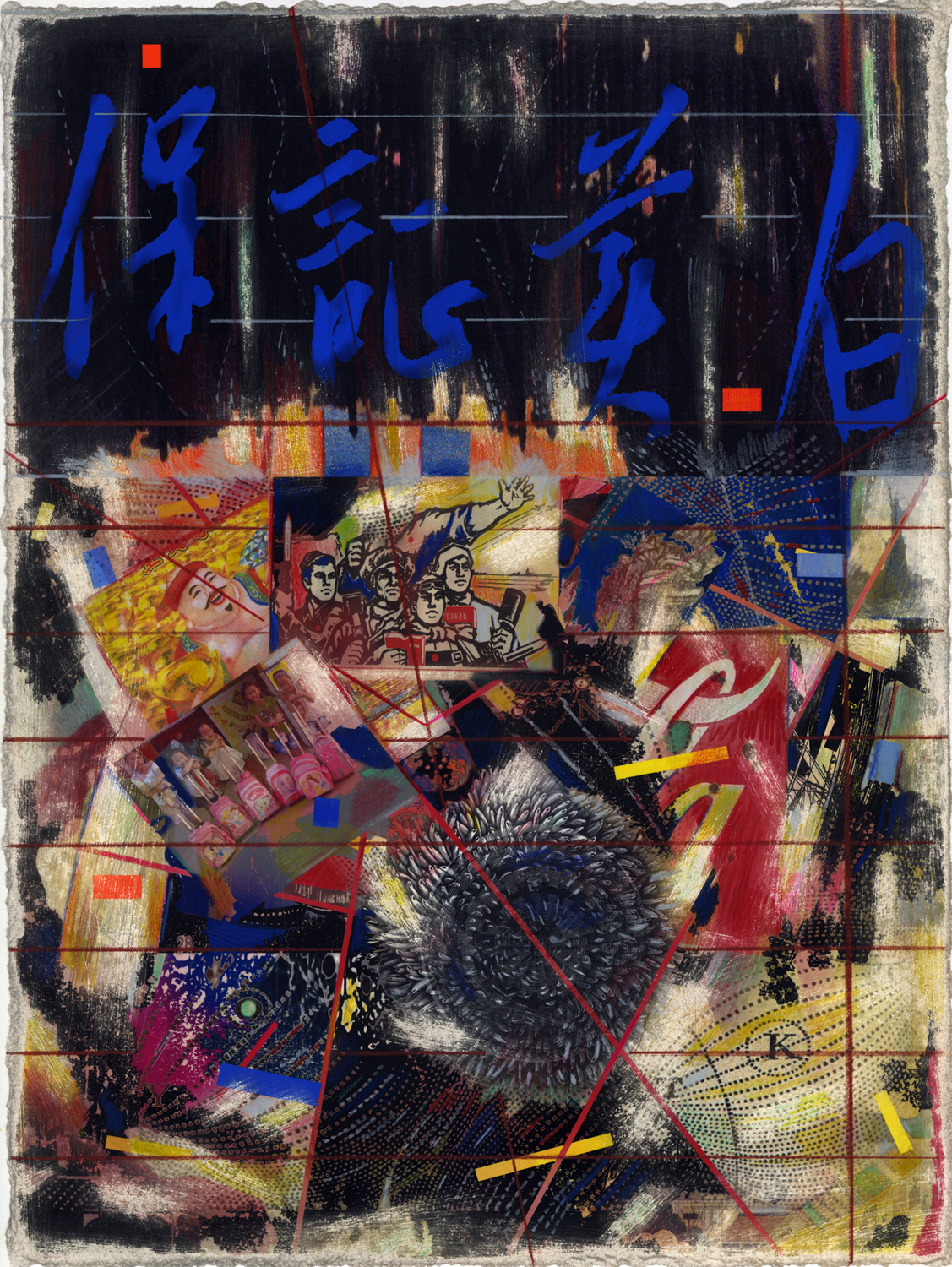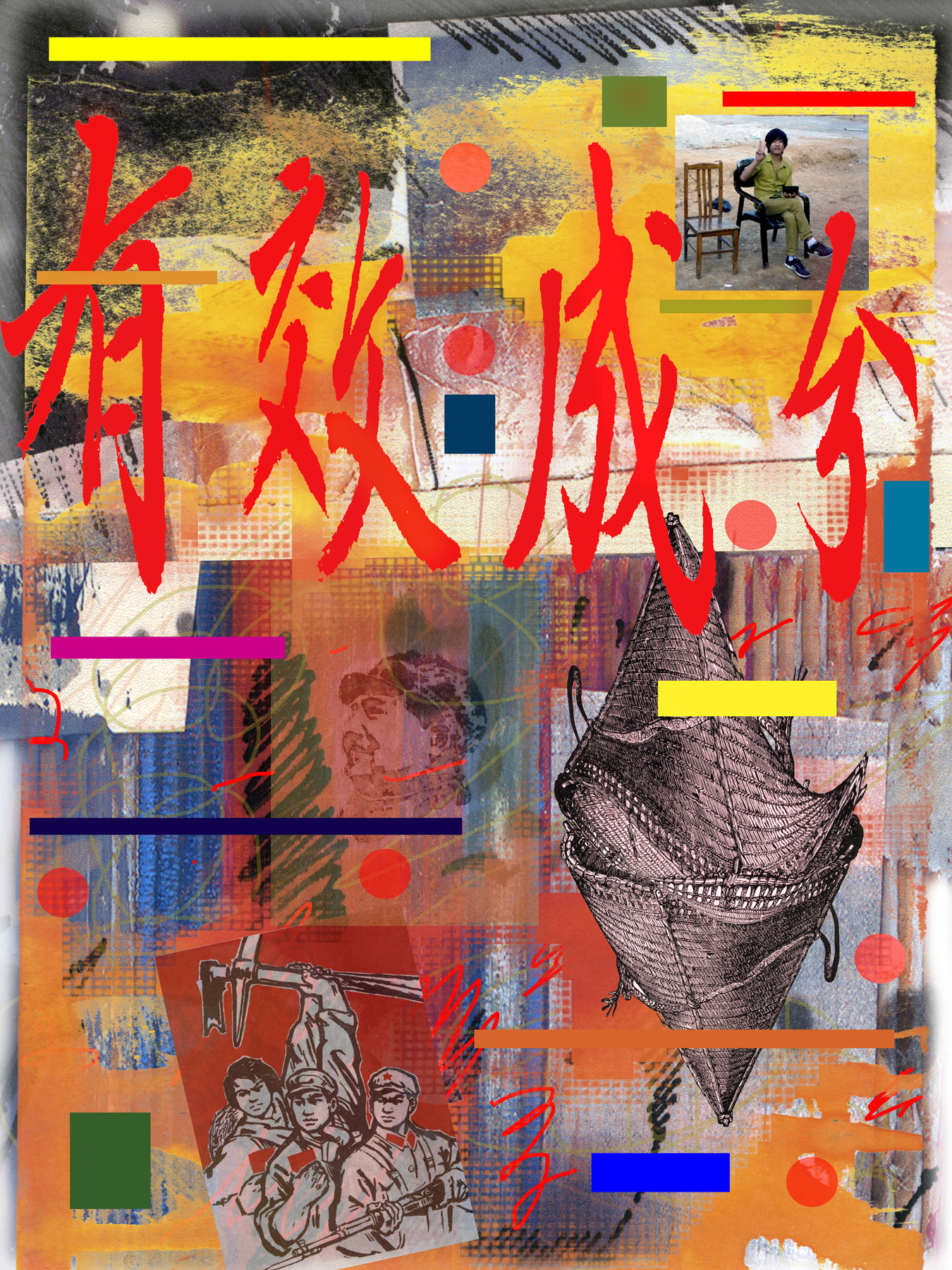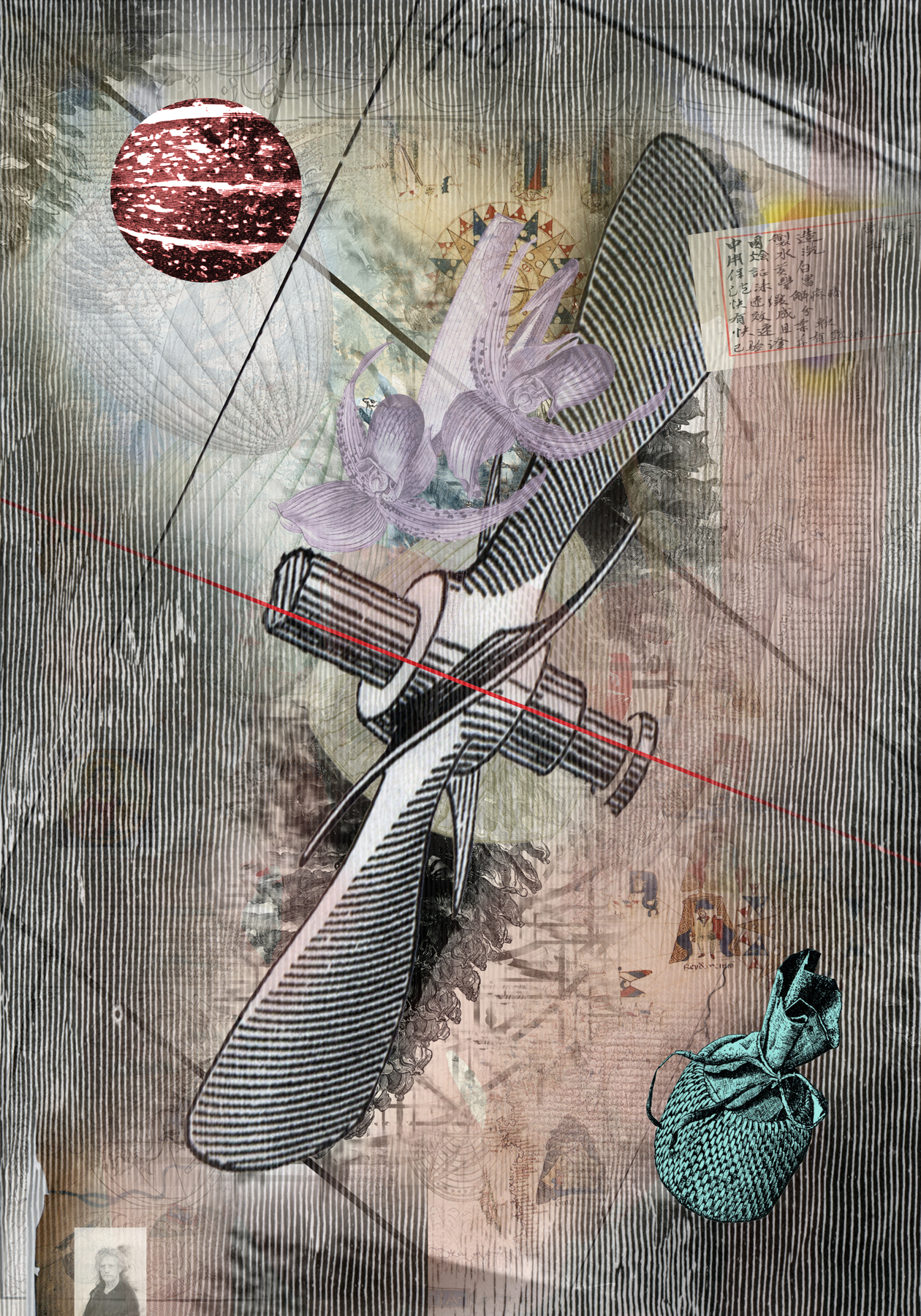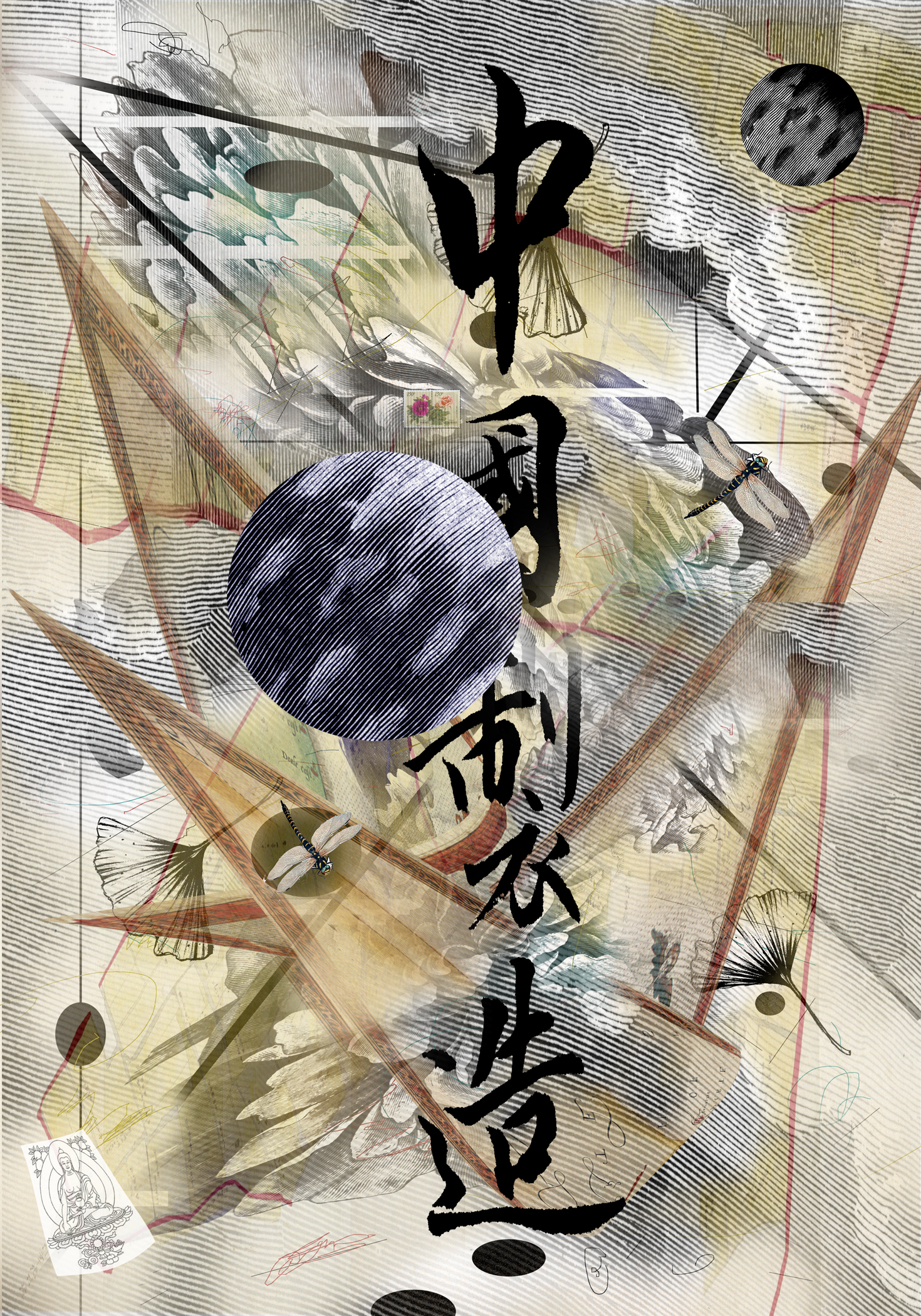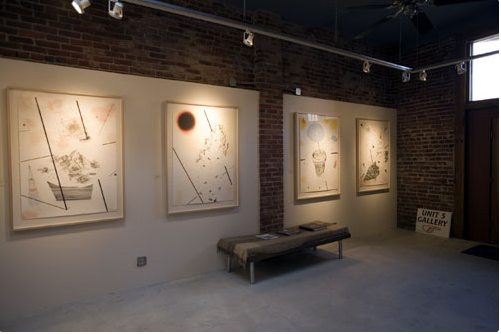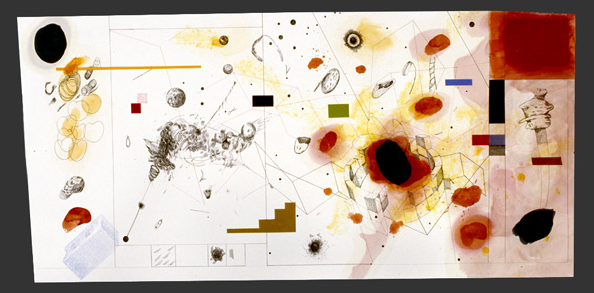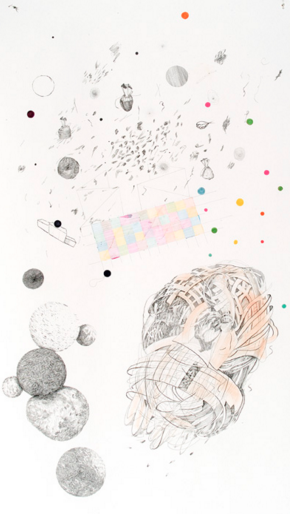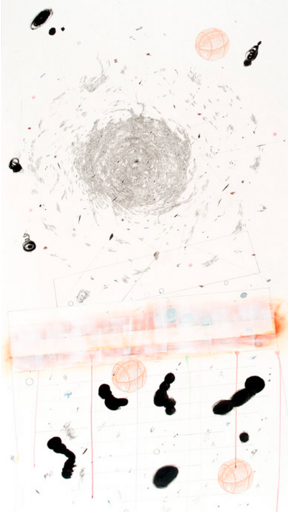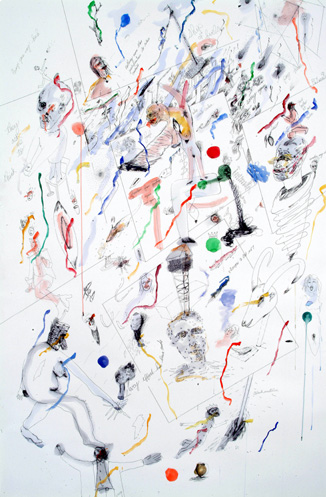Making and Collaboration
Making and Collaboration covers a single year’s creative studio journey by Hugh Merrill and a collaboration with artist and poet Jeanette Powers. The work Merrill created covers a number of themes and ideas moving from the fluidity of geometric forms in space, to political works about his family concerning race and power, on to drawings related to Gorge Grosz’s Ecce Homo and more. When asked about the exhibition Merrill, responded that at its base is creativity, creativity as content, embedded in a history of mark making spanning over 50 years. Over 9 works from the exhibition went to museums including the Kemper Museum of Contemporary Art Kansas City, the Albright Kemper Museum St. Joseph Missouri and the Mulvane Museum in Kansas.
Divergent Consistencies
Divergent Consistencies charts the studio and community artwork of Hugh Merrill 1970 to 2009. Merrill’s early prints were informed by his interest in social justice and environmental issues. These underlying perceptions have been consistent in his studio work for over 40 years. Merrill has worked for over 15 years on collaborative, socially engaged, interdisciplinary community art actions. He has led and developed Chameleon Arts and Youth Development, a not for profit company, that has brought over 1 million dollars worth of arts and educational projects to disenfranchised communities in Kansas City. Divergent Consistencies demonstrates Merrill’s deep belief in the enriching relationship between studio and community artistic practice.
Winterreise
Made in china
Hugh Merrill's six-week residency at Guanlan Original Printmaking Base in Shenzhen, China, resulted in hisMade in China exhibition. The work was presented in January and February, 2013, at the Todd Weiner Galleryin Kansas City, MO. This body of work explores the relationship between commercialism and culture, and considers how form influences perception. Merrill's ongoing interest in Americana interfaces with the palette of advertising, traditional Chinese brush forms, and detailed organic and structural elements to form a multi-faceted discussion of cultural crossing points.
Ecoscape
LEEDY-VOULKOUS ART GALLERY, MAY 2 - MAY 30, 2008
Wilderness is a national park or a future and present lumberyard. Realestatescape is perhaps a better term than landscape for describing our reality of land defined by its monetary value. Ecoscape goes a step further providing a global systematic concept for considering environment, resources, utilization, architecture and connection.
These works search for a language to articulate my knowledge of drawing, space and image informed and guided by the Ecoscape in which we reside.
31 @ Unit 5
Unit 5 Gallery, Kansas City, Missouri, 2006
Wounded Healer
Shook
Print can no longer be defined as a series of categorical processes etching, silkscreen, litho and relief. Print is defined by its conceptual territory, by fundamental creative patterns and actions that guide the artist’s search in their studio narratives. These creative actions are related to the exploration of multiples, reproduction, recontexturalization, image collection and transformation. These activities are founded in the dialogue between three participants the artist, the technology and the artwork. Print is based on delay and variation. The delay is the slowing of the artists gesture through the intervention of technical processes. The delay is the gap between drawing, processing and printing. Variation is the ability to stop the creative process and print the present state of the image then continue the exploration. Variation is not restrained by a process, an image may move from digital to litho to digital to etching. The image may begin as a small line etching on paper and end as a large vinyl banner on the side of a building.
My hybrid prints, the Shook series is an example. I might begin by drawing on a zinc etching plate and printing an image, the image is scanned into a computer and enlarged or reduced, The scan becomes part of a Photoshop collage that is printed out on decal paper and adhered to a board cut in an oval shape. The image is then altered and added to by screen-printing over the digital print. Paper is then glued over the surface and the image is drawn and painted into. Is the final work more print or painting? My answer would be print because the use of technology allows me to slow, stop, multiple, transform, produce variations and recontexturalize the image.
My conceptual definition of print allows me to create works that would not normally be catalogued as prints. But I am more comfortable seeing all my work be it my drawings, painted on digital prints, and my community art works as conceptually related to print. I approach all my works as a printmaker. Like Deter Roth I am interested in capturing the image, producing variations and multiples. My unique images are resource material for the reproducible matrix. The drawings are meant to return to etching, to be digitally photographed and or scanned into Photoshop. Each image I make demands a counter image and a new voice. My thinking is based in the use of the delay and variation.
Note:( variation allows the artist to produce contradictory voices with the same image. Variation is about intellectual conversation, states of emotion and contridiction. Variation is a means to come closer to articulating the essence of truth than possible in a single image)
For many years from 1985-1996 I worked on several sequential series of etchings, the Lucky Dragon Suite, then Facts of Fictions. All my energy and effort went into printing the plates then scraping and deconstructing the images. I was always in search of the new state, the discovery of the image I could not quite picture in my imagination but only find in the ghostly remnants of the sequential etching process.
In 1996 I was invited to conceive and facilitate a collaborative installation with artist Christian Boltanski for the Kemper Museum of Contemporary Art in Kansas City. Boltanski and I produced a work, “Our City Ourselves” which invited the residents of the Kansas City metropolitan area to bring their family photographs to the museum, copy; then install them on the walls of the gallery. I designed a tabloid sized newspaper insert for the Sunday paper of the Kansas City Star inviting the community to participate. Several thousand people brought their family documentation to the museum, copying and installing their prints/reproductions that soon covered the walls of the gallery from floor to ceiling.
As a visiting artist to the museum for the Boltanski exhibition, I was asked to conceive and facilitate a community arts project. I produced a work that asked a community of high school students to archive their lives, recall lost memory and add social and historical context to their personal archives. The project “Portrait of Self” was exhibited at the Kemper Museum in conjunction with the Boltanski exhibition. The project from start to installation was a print process and project.
Since then I have used the “Portrait of Self” process for collecting content to produce public and percent for the arts commissions and installations. “Portrait of Self” has been used to produce large printed graphic outdoor murals in Hollywood/Dania Beach Florida, as printed scrolls installed for the Daum Museum in Sedalia, Missouri, installations at the Manchester Craftsman’s Guild in Pittsburgh PA, and FutureSelf in Colorado Springs Co. Most recently the process is being employed for percent for the arts commissions for the Health Department complex in Columbia and the creation of sculptures and text for a skateboard and “metaphysical park” in Roeland Park, Kansas.
he Health Department project in Columbia is a prototype for my public art projects and based in the conceptual definition of Print. The Columbia Health Department is made up of a series of scientific and medical services such as animal control, public health, family health, and environmental science. The artwork for the health department was designed to flow throughout the architectural complex, be made up of images that relate to the various health department sciences, reflect the communities using and working in this building, visually unify the public and private spaces, enrich and contextualize the environment. For the Health Department I am producing 9 non-stylistic projects including print/painting graphic installations using scientific and community images as resources, large silhouette cutout forms based on DNA structures, Polysilk to hang in the atrium spaces in the complex, vinyl forms based on cell structures for the large exterior windows of the building and a variety of text plaques selected from song lyrics and poetic quotes solicited from the employees who work in the building.
Print and printmaking are essential to my creative process. When working with Boltanski he commented that he did not think of himself as a photographer but as a painter because that was his first and primary artistic experience on which all else has been built. For me a magic door opened when I began to draw on an etching plate and those experiences have direct and guided all my diverse and broad creative activities. At heart I am simply a printmaker.
